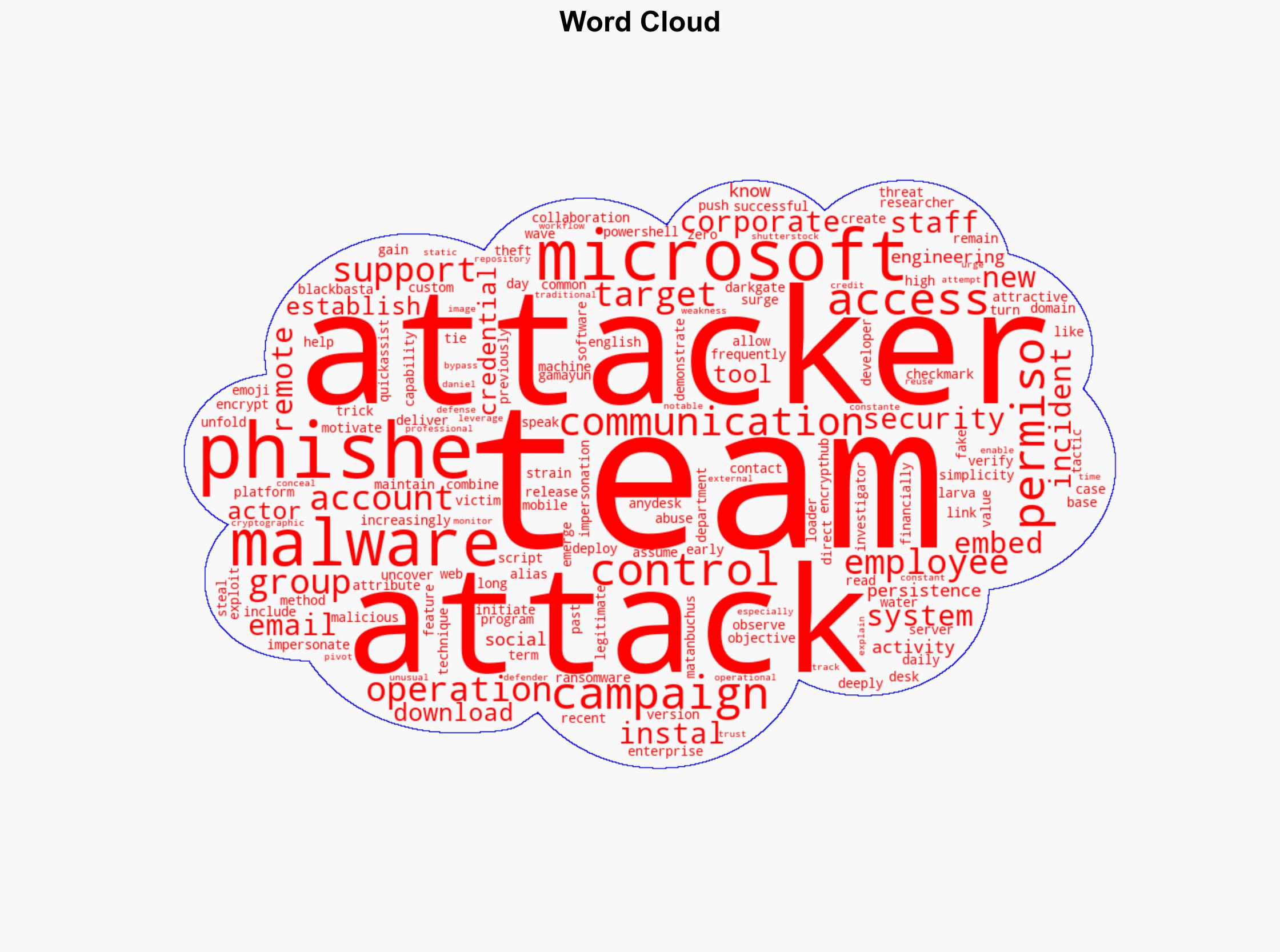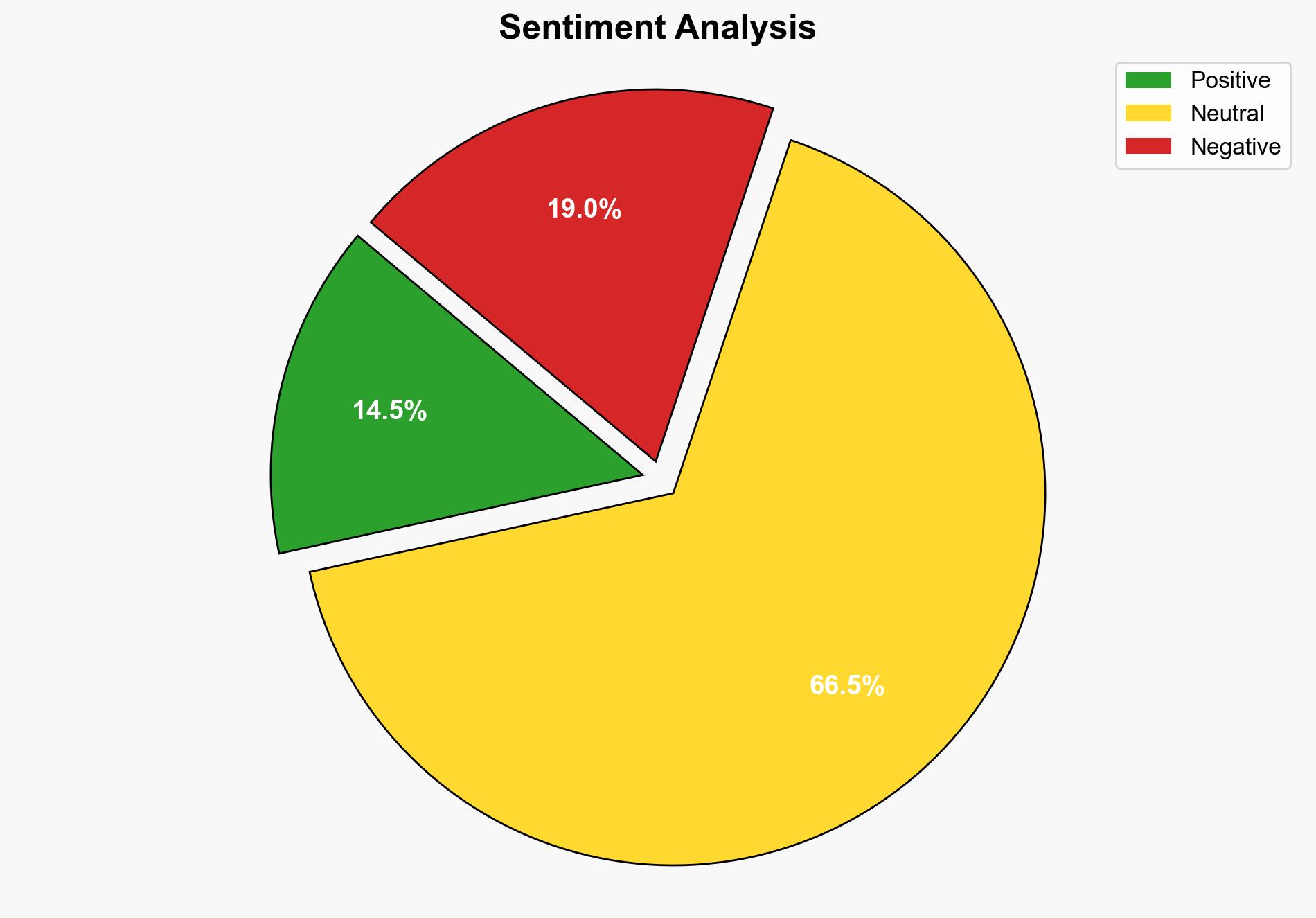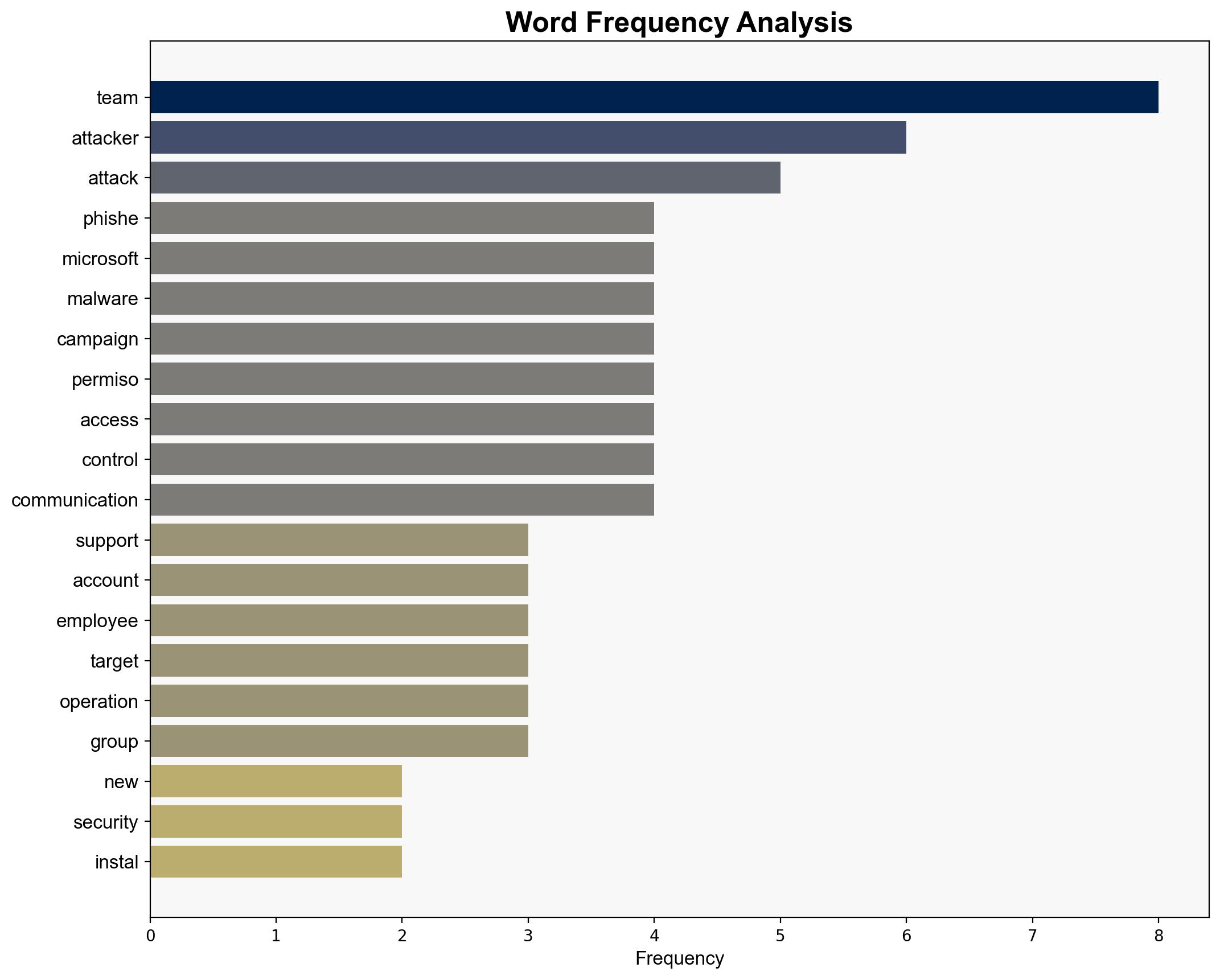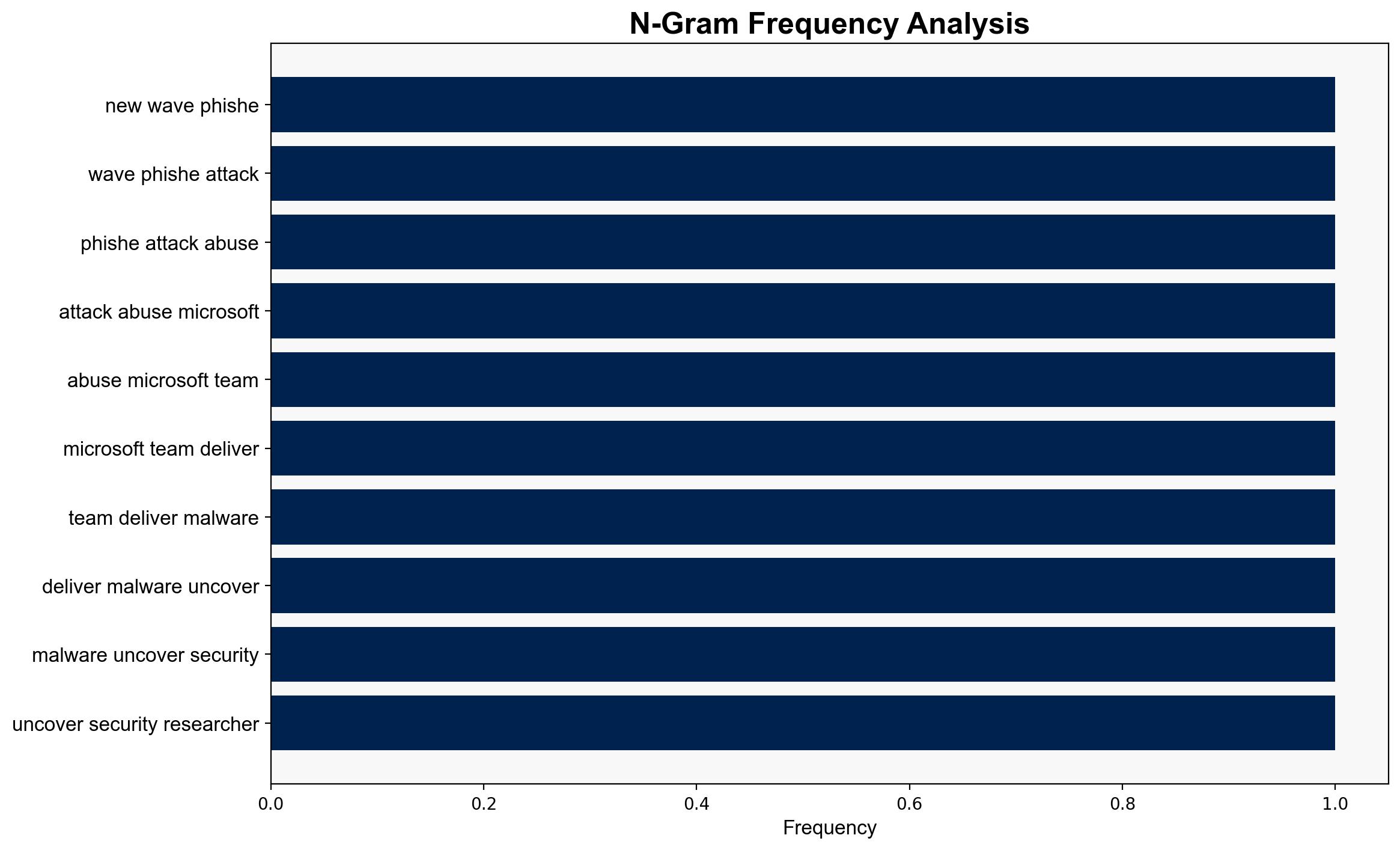Fake IT Support Attacks Hit Microsoft Teams – Infosecurity Magazine
Published on: 2025-08-28
Intelligence Report: Fake IT Support Attacks Hit Microsoft Teams – Infosecurity Magazine
1. BLUF (Bottom Line Up Front)
The most supported hypothesis is that financially motivated cybercriminal groups are exploiting Microsoft Teams to bypass traditional email defenses and gain persistent access to corporate systems. Confidence level: Moderate. Recommended action: Enhance monitoring of Microsoft Teams activities and implement additional security measures to detect and mitigate phishing attempts within collaboration platforms.
2. Competing Hypotheses
Hypothesis 1: Cybercriminal groups, such as Encrypthub, are targeting Microsoft Teams to exploit its integration in corporate environments for financial gain through credential theft and malware deployment.
Hypothesis 2: State-sponsored actors are leveraging Microsoft Teams to conduct espionage activities by infiltrating corporate systems under the guise of fake IT support, aiming to gather sensitive information for strategic advantage.
3. Key Assumptions and Red Flags
Assumptions:
– Hypothesis 1 assumes that the primary motivation is financial gain and that the attackers are primarily cybercriminals.
– Hypothesis 2 assumes that the attackers have state sponsorship and are motivated by strategic intelligence gathering.
Red Flags:
– Lack of direct evidence linking the attacks to state-sponsored actors.
– Potential bias in attributing attacks to known cybercriminal groups without considering new or evolving threat actors.
4. Implications and Strategic Risks
The integration of Microsoft Teams into corporate workflows presents a significant vulnerability if exploited by threat actors. Successful attacks could lead to widespread credential theft, data breaches, and financial losses. If state-sponsored actors are involved, there is a risk of sensitive information being compromised, impacting national security and competitive business interests.
5. Recommendations and Outlook
- Implement advanced threat detection systems specifically for collaboration platforms like Microsoft Teams.
- Conduct regular security awareness training for employees to recognize and report phishing attempts.
- Scenario Projections:
- Best Case: Enhanced security measures successfully prevent further breaches, and attackers shift focus away from Microsoft Teams.
- Worst Case: Attackers achieve widespread infiltration, leading to significant data breaches and financial losses.
- Most Likely: Continued attempts by cybercriminals with sporadic success, prompting ongoing security enhancements.
6. Key Individuals and Entities
– Encrypthub (also known as Larva, Water, Gamayun Group)
7. Thematic Tags
national security threats, cybersecurity, counter-terrorism, regional focus





